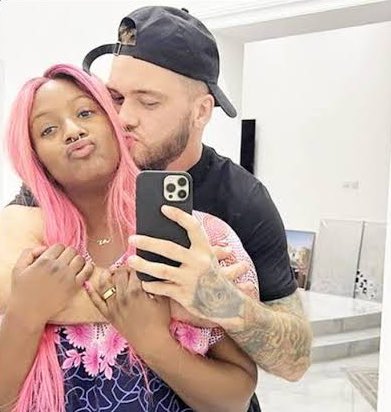Copyright The Philadelphia Inquirer

Philadelphia Magazine, the glossy regional magazine long owned by the Lipson family, is in new hands. On Friday, the Philadelphia Citizen, led by longtime journalist Larry Platt, purchased the 117-year-old publication. The question now is whether Philadelphia still wants a glossy regional lifestyle brand — or whether the moment for such a product, however storied, has passed. (Yes, we recognize the irony of publishing this in a 196-year-old daily newspaper.) In the 1960s, Philly Mag helped pioneer the mix of juicy narratives, sharp commentary, and rankings that came to define city magazines nationwide. But it’s a rocky time for local media — especially legacy print publications, whose advertisers and readers have steadily dwindled. Meanwhile, on TikTok and Reddit, thousands of people are eager to tell you about the best restaurants and the latest scandals. (To be fair, there is only one Victor Fiorillo, Philly Mag’s best-known staffer, who covers everything from the Swiss Cheese Pervert to the Delco Pooper.) And these challenges aren’t unique to Philadelphia; they’ve tripped up regional and national media outlets across the country. » READ MORE: Philadelphia Magazine has been sold to The Philadelphia Citizen, and will operate as a nonprofit Platt insists he doesn’t want to simply manage the decline of a one-time Philly powerhouse. Instead, he said, he wants to transform Philly Mag into a platform-agnostic “local Atlantic or a local Free Press,” a reference to Bari Weiss’ anti-woke opinion and news site that reportedly just netted roughly $150 million in a sale to Paramount. Though Platt uses terms like “strategic cross-pollination” and “natural synergy” to describe the merger, his ambitions clearly reach beyond a well-executed business deal. “It’s about acts that add up to — I know it sounds corny — acts that add up to the saving of free speech, democracy, and our city,” Platt said. Platt, who cofounded the digital nonprofit Philadelphia Citizen in 2015, previously was a staff writer and later top editor at Philly Mag for eight years. He was fired in 2010 by the Lipson family for his “history of inappropriate and unprofessional remarks and jokes to his employees,” including giving a departing female staffer a framed photo of a cyst removed from his testicle, according to the Daily News. Platt said that “gift,” which he did not dispute, was not what led to his firing, which he attributed instead to his management style. “Historically, editing Philadelphia Magazine has been like being a manager in the major leagues. The line is, you get hired to be fired, right?” Platt said of his previous departure. He went on to become editor at the Daily News from 2011 to 2012. Former Philly Mag owner David Lipson said: “Life and careers and personalities, they always have chapters. I think this is a new one for him.” Philadelphia Magazine will become a nonprofit under the umbrella of the newly formed Citizen Media Group. Platt and Roxanne Patel Shepelavy, Citizen Media Group executive director, envision one combined editorial team serving two distinct brands, with staff contributing across both. They want to launch a daily podcast, increase the magazine’s video and social media output, and build on the Citizen’s successful events arm — an approach modeled by national magazine publishers like Condé Nast. Some, including those who want to see Philly Mag thrive, are skeptical that all this can add up to a successful publication people actually want to read — pointing to the enormous challenges facing local media, and journalism more broadly, right now. “If there were a secret to attracting attention and subscriptions as a basic print magazine, somebody would have found it by now,” said Sandy Hingston, an editor at Philly Mag for nearly two decades and now its emeritus editor-at-large. “It’s not so much that I’m not optimistic about the future of Philadelphia Magazine,” she added. “It’s that I’m not optimistic about the future of journalism in general.” David Lipson grew up watching his father, Herb, mock up issues at the family kitchen table. Together with editor Alan Halpern, Herb helped invent the modern city magazine. Though Philadelphia was its name, the magazine’s primary audience became those living outside the city. Its coverage — of power, money, sex, and how to live well — reflected that reality, and advertisers were eager to reach the wealthy Main Line readers who might browse its pages. “It was basically a magazine for affluent suburbanites to see where they wanted to go eat on a Saturday night,” said Laurence Roy Stains, a Temple University journalism professor and former Philly Mag writer and editor. At the same time, Lipson and Halpern added enough investigative grit and lively writing to get people talking. In 1967, Philly Mag reporter Gaeton Fonzi broke the story that then-Inquirer reporter Harry Karafin had accepted bribes from subjects in exchange for not writing negative stories about them. Karafin was later convicted of extortion and sentenced to prison. “Fonzi became the closest thing the region’s leaders and influencers had to Hunter S. Thompson,” the Awl wrote in 2016. In 1974, Philly Mag ran its first “Best and Worst of Philly” list, setting the irreverent tone for the franchise with its opening line: “God couldn’t be here tonight, so we’ve taken this opportunity to fill in for Him.” Writing about the city for suburban readers wasn’t uncomplicated. Over the years, the magazine sometimes fanned racial tensions both within Philadelphia and between the city and its suburbs. A 1979 cover, for example, asked ominously, “Is Philadelphia going Black?” Decades later, under editor Tom McGrath, a 2013 cover story titled “Being White in Philly” drew national outrage for quoting white Fairmount residents anonymously about their Black neighbors — and quoting no Black Philadelphians at all. Then-Mayor Michael Nutter condemned the story in a letter to the city’s Human Relations Commission, calling it a “pathetic, uninformed essay.” In an editor’s note, the magazine acknowledged it had no Black editorial staffers at the time. Two-and-a-half years later, another cover — on how to pick a school for your child — featured a photo without a single Black student, even though Philadelphia’s public school system is majority Black. The magazine again apologized and pledged to diversify. In 2020, after the murder of George Floyd, McGrath resigned and Philly Mag recommitted to diversifying its ranks. But some staffers and readers felt it was too late. “People in the city already had their views of the magazine. Broader Philadelphia just stopped caring — by broader Philly, I mean Black people in Philly,” said a former staffer of color who didn’t want to be named for fear of retribution. Platt acknowledged that fraught history and said the Citizen, by contrast, is “awfully diverse on race, gender, and especially thought.” “The goal here is to produce a magazine, website, podcast, events, that are for all of Philadelphia,” he said. Sandy Smith, a freelance journalist and former Philly Mag real estate editor, recalled a 2017 staff retreat where the marketing team shared audience data showing the median household income of subscribers was about $190,000 — roughly $7,000 more than the median income in Gladwyne, the region’s wealthiest zip code. That kind of audience is valuable: Print readers still attract the most lucrative advertising dollars. “It’s hard to be a must-read when you keep plowing the same ground,” said Tim Whitaker, who spent 14 years as editor-in-chief of the alt-weekly Philadelphia Weekly and recently retired as executive director of the nonprofit Mighty Writers. “You have to reinvent yourself while holding onto the advertisers that support all of that stuff.” Over time, the magazine’s staff and page count shrank. Algorithm changes drove down online traffic, and none of Lipson’s children wanted to inherit the business. “It needs new energy, new ideas — it needs resources,” Lipson, who has agreed to stay on as a non-voting board member, said. “Our family is not prepared to do that. It’s time to hand the baton off.” All over the country, city and regional magazines are trying to reinvent themselves for a new era. Los Angeles magazine is now owned by two celebrity attorneys with their own interests, and Texas Monthly has partnered with HBO to adapt its magazine stories for television. “It’s not like Philly Mag is the only city magazine that has lost subscribers and lost advertisers and lost pages,” said Chris Krewson, founding editor of Billy Penn and the executive director at LION Publishers, which helps local newsrooms with their business models. “Those are all, without exception, in trouble right now.” Platt said Philly Mag will continue monthly print publication, with no layoffs planned for journalists, though eight, shared-services employees in advertising and marketing will lose their jobs as part of the transition, as well as the full-time fact checker. The acquisition is being funded by a group led by venture capitalist Richard Vague and Future Standard CEO Michael Forman, with a board chaired by former Comcast CEO David L. Cohen. Freelance journalist Christine Speer Lejeune will be the magazine’s new editor. A full relaunch is expected about six months after the sale, followed by a tiered “membership plan” — part of which is modeled after the Green Bay Packers’ community-ownership structure, allowing stakeholders to be part of “this movement,” as Platt described it. The purchase and runway rely on founding donors, led by Vague, Forman, and Cohen. And perhaps that’s what Platt in particular brings to the table: a group of deep-pocketed residents who want to invest in what he has pitched as a civic asset for the city. Media veterans across the city told The Inquirer about their own ideas for Philly Mag’s future: recruit and train young writers, develop new, popular digital verticals like New York Magazine’s “The Cut,” make print editions into luxurious collectible objects, and lean harder into social media. Above all, “I think you have to create energy and be edgy,” said Whitaker, the former alt-weekly editor. In a dwindling local media landscape, even skeptics say they’re rooting for Philly Mag’s reinvention. But they are not sure there’s a place in today’s ecosystem for a glossy city magazine, even one with new owners and an updated mission and a focus on digital. “My initial joke was that I’m not sure how a nonprofit is going to rate the best plastic surgeons on the Main Line,” Krewson said, “but we’re about to find out.”



